The myth of the "war of conquest" of the USSR to seize Iran
prehistory
Some liberal publicists tried to create a myth about the “USSR aggression” with the annexation by Moscow of the Azerbaijani part of Iran to the Azerbaijan SSR. However, if you study this little-known page of the Second World War, it becomes clear that Moscow had objective reasons for such actions. Although it was a difficult time for the Red Army to retreat under the attacks of the Wehrmacht, when the armies involved by the Transcaucasian Front were badly needed in the European part of Russia.
The main prerequisites that caused the British-Soviet operation were the issues of global geopolitics and the strengthening of security, and not the desire of the USSR to seize part of Iranian territory:
1) protection of the oil fields of the Union (Baku) and England (Southern Iran and the border areas of Iraq with Iraq);
2) the protection of the Allied transport corridor, since a significant proportion of supplies under the Lend-Lease subsequently followed the Tabriz - Astara (Iran) - Astara (Azerbaijan) - Baku route and beyond. From August 1941, the cargo began to arrive in the northern seaports, which were closer to the battle front: Murmansk, Arkhangelsk, Molotovsk (now Severodvinsk), etc. Cargo from the USA also accepted Vladivostok, Petropavlovsk-Kamchatsky, Nogayevo (Magadan), Nahodka . In the North, convoys were subjected to German attacks (Navy and Air Force). Dozens of warships, hundreds of planes and tens of thousands of people were involved in guarding the convoys, but they did not save them from loss. And the eastern route was removed. Therefore, the southern route became more and more attractive - through the ports of Iran and Iraq to Soviet Armenia, Azerbaijan and Turkmenistan.
3) the danger of the approval of the forces of the Third Reich in Iran against the background of the emergence and rise of "Iranian (Persian)" National Socialism.
It is also worth noting that in addition to the factors of “black gold” and communications of strategic importance, as well as the possibility of the emergence of the Berlin-Tehran axis, although they were essential for the sharp reaction of Moscow and London, there were other nodes of contradictions, such as the Kurdish and Azerbaijani issues. So, right up to the beginning of the 20th century Persia was ruled not by Iranian (Persian) dynasties, but Azerbaijani Safavids (from 1502 to 1722), Turkic Qajars (from 1795 to 1925 a year). For many centuries the Turks constituted the military-political elite of Persia, so, starting from the 13th century, the Turkic cities of Tabriz, Ardebil, Hamadan and Qazvin were the forge of the ruling dynasties, rulers, military, nobility and scientific elite.
At the beginning of the 20th century, along with other areas of life, the Turkic element played a major role in the political life of the country - almost all political parties in Iran were represented or led by people from the provinces of southern Azerbaijan. Political activity, economic activity of Turks (Azerbaijanis), Armenians and Kurds (Turks and Armenians were often the majority or half of the population of large cities) largely determined the life of Persia-Iran. As a result, it can be said that the “titular nation” felt itself slighted.
In 1925, as a result of a palace coup, Reza Pahlavi came to power in Persia and founded a new, “root”, Pahlavi dynasty. It was then that Persia was declared Iran (“the land of the Aryans”), and at an accelerated pace began to move along the path of Europeanization, “Parthianism” (the Parthians were Persian-speaking people who created the Parthian power) and Aryan imperialism. Before the National Socialists came to power in Germany, the Italian leader Benito Mussolini was an example for the Iranian elite. But the example of Germany has become even closer for Iran - the idea of "purity of the Aryans" came to the taste of youth organizations and officers.
Thus, despite the strong position of British capital, which played a key role in the Persian-Iranian economy, the geopolitical and ideological bias towards the Third Reich became ever stronger. In addition, since 1933, Germany itself is shifting its relations with Iran to a new qualitative level. The Third Reich begins to take an active part in the development of the economy, the infrastructure of Iran, and the reform of the armed forces of the monarchy. In the Third Reich, Iranian youth are being trained, the military, whom Goebbels' propaganda called "sons of Zarathushtra." German ideologues declared the Persians "purebred Aryans", and they were freed by special decree from the Nuremberg racial laws. In December 1937, the leader of the Hitler Youth Baldur von Schirach was pompously received in Iran. For the guest of honor in the presence of the Iranian Minister of Education at the stadiums of Amjadi and Jalalio solemn events were held with the participation of Iranian scouts, students and schoolchildren. Iranian youth even marched with a Nazi salute. On the eve of the end of the visit, the head of the “Hitler Youth” was received by Shahinshakh of Iran, Reza Pahlavi.
Iranian youth organizations were created in the country on the German model. In 1939, the boy scout units became compulsory organizations in Iran’s schools, and the crown prince Mohammed Reza Pahlavi became their supreme leader. By the beginning of World War II, scout organizations had been turned into paramilitary groups of Iranian youth, exemplified by Nazi Germany. The Germans understood perfectly the importance of the education system for the future of the country, so the Reich took an active part in the opening of new Iranian educational institutions. Before the First World War, the German Empire opened a German college in Tehran, and established missionary schools in Urmia and Hoije. In the middle of 1930, the Iranian education system came under the full control of German teachers and instructors who arrived in the country at the invitation of the government. The Germans began to manage the departments in most educational institutions of Iran, managed the educational process in the agricultural and veterinary institutes. In Iranian schools, the programs were based on German samples. Much attention was paid to learning German - 5-6 hours per week were devoted to him. The children were inspired by the ideas of the "superiority of the Aryan race" and the "eternal friendship" of Iran and Germany.
At the initiative of the Iranian government in the second half of 1930's, an Organization for Orientation of Public Opinion was established. It includes representatives of the Iranian Ministry of Education and Tehran University, public and cultural figures of the country, leaders of boy scout organizations. This organization has established close ties with German propagandists. For pupils, students, employees held mandatory lectures, where they promoted a positive image of the Third Reich. The Iranian media also participated in this activity. In Germany, students were taken from Iran, so almost all Iranian doctors received a German education. Many German-educated students became German agents of influence after returning home. Germany was also the main supplier of medical equipment to the country.
Thus, by the beginning of World War II, the Third Reich had gained a strong position in Iran, and in fact the country was turning into a German ally in the Middle East region. It is obvious that the Soviet Union and Britain, in the conditions of confrontation with Germany, could not allow the Germans to establish themselves in a country that traditionally belonged to their sphere of influence.
By 1941, the situation with Tehran and its “Aryan slant” for Moscow and London has become intolerable. There is a real threat that Iran’s oil and transport infrastructure built on British capital will be used by the Third Reich against the USSR and Britain. So, only one oil refinery in Abadan in 1940 processed 8 million tons of oil. AND aviation Gasoline throughout the region was produced only in Baku and Abadan. In addition, if the German armed forces broke through from North Africa to Palestine, Syria or in 1942 reached the Baku-Derbent-Astrakhan border, the entry of Turkey and Iran into the war on the side of Germany would be a resolved issue. Interestingly, the Germans even developed an alternative plan, in case Reza Pahlavi became stubborn, Berlin was ready to create "Great Azerbaijan", uniting North and South Azerbaijan. For the USSR, the appearance of Germans in Iran and the creation of the axis of Berlin - Ankara - Tehran, was a deadly threat. And Britain was threatened with serious troubles, in particular, the question of India’s security arose.
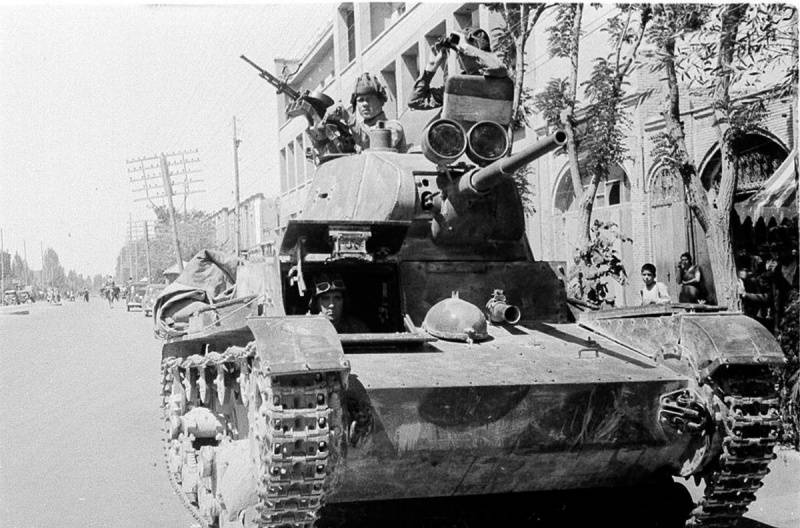
Soviet light tank T-26 and its crew in the Iranian city of Tabriz
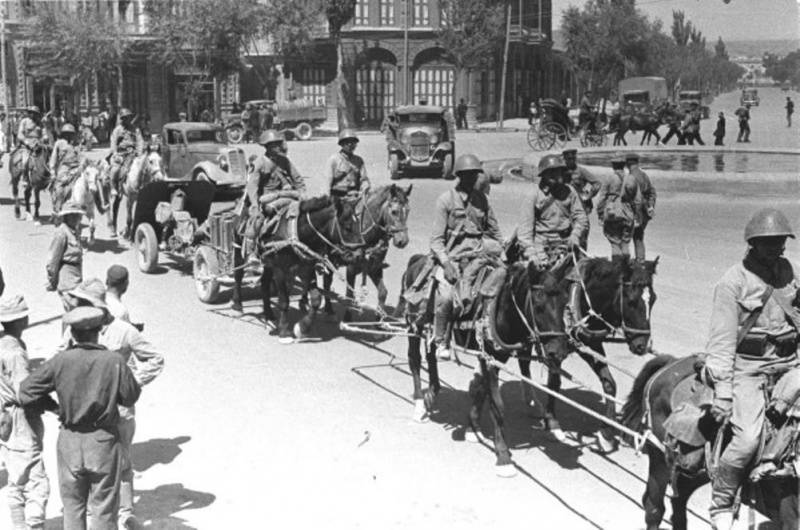
Artpolk Red Army enters the Iranian city of Tabriz
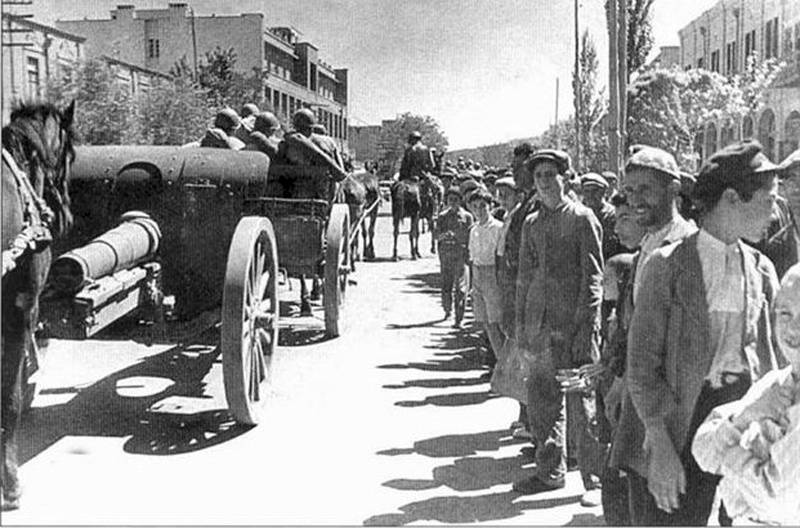
Red Army troops in the streets of Tabriz
Preparation of the operation
After 22 June 1941, the Third Reich attacked the Soviet Union, Moscow and London became allies. Negotiations are beginning on joint actions in Iran to prevent the Germans from invading this country. They were led by the British ambassador Cripps in meetings with Molotov and Stalin. 8 July 1941 G. JV Stalin, in an interview with British Ambassador to the USSR R. Cripps, raised the question of the situation in the Middle East. He was worried about the excessive concentration of German agents, including saboteurs, on the territory of Iran and the very high probability of the country's accession to the German axis, which would threaten the southern borders of the USSR. The British side, despite the neutrality declared by Iran, reacted to Moscow’s concerns with understanding, since the British Empire had special interests in the region.
8 July 1941 was issued by the Directive of the NKVD of the USSR and the NKGB of the USSR No. 250 / 14190 “On measures to prevent the transfer of German intelligence agents from Iranian territory”, it was de facto a signal to prepare for the Iranian operation. The planning of the operation to seize the Iranian territory was entrusted to Fyodor Tolbukhin, who at that time was the chief of staff of the Transcaucasian Military District (ZakVO).
Three armies were allocated for the operation. 44th under the command of A. Hadeev (two mountain rifle divisions, two mountain cavalry divisions, tank regiment) and 47th under the command of V. Novikov (two mountain rifle divisions, one rifle division, two cavalry divisions, two tank divisions and a number of other formations) from the ZakVO. They were strengthened by the 53rd Combined Arms Army under the command of S. Trofimenko; it was formed in the Central Asian Military District (SAVO) in July 1941. The 53rd Army included a rifle corps, a cavalry corps and two mountain rifle divisions. In addition, the Caspian Military took part in the operation. flotilla (commander - Rear Admiral F. S. Sedelnikov). At the same time, the 45th and 46th armies covered the border with Turkey. ZakVO at the beginning of the war was transformed into the Transcaucasian Front under the command of Lieutenant General Dmitry Kozlov.
The British formed an army group in Iraq under the command of Lieutenant General Sir Edward Quinan. In the area of Basra two infantry divisions were concentrated, and three brigades (infantry, tank and cavalry). Part of the troops were preparing to strike in the north - in the area of Kirkuk, Khanagin. In addition, the British Navy took part in the operation and occupied the Iranian ports in the Persian Gulf.
Iran could counter this power of all 9 divisions and 60 aircraft. In addition, the Iranian troops were much weaker than the Soviet and British units in terms of technical equipment, combat training. On August 19, the Iranian government canceled military leave, an additional mobilization of 30 thousand reservists was announced, the army number was increased to 200 thousand people.
Simultaneously with the military training was diplomatic. 16 August 1941 Moscow sent the note to Tehran and demanded that the Iranian government immediately expel all German nationals from Iran. A demand was made to deploy British-Soviet forces in Iran. Shah of Iran Reza Pahlavi denied this.
21 August 1941 of the Year The Supreme Command of the USSR informs the British side of its readiness to begin operation 25 August. 23 August 1941, Iran announced the start of the expulsion of Reich nationals from its territory. 25 August 1941 of the year Moscow sent Tehran the last note, which states that given the 5 and 6 clauses of the Treaty in effect between Soviet Russia and Iran of 1921 of the year (they provided for the entry of Soviet troops in case of a threat to the southern borders of Soviet Russia) The USSR has the right to send troops to Iran for the purpose of self-defense. On the same day began the introduction of troops. The Iranian Shah asked for help from the United States, but Roosevelt refused, assuring the Shah that the USSR and Britain had no territorial claims against Iran.
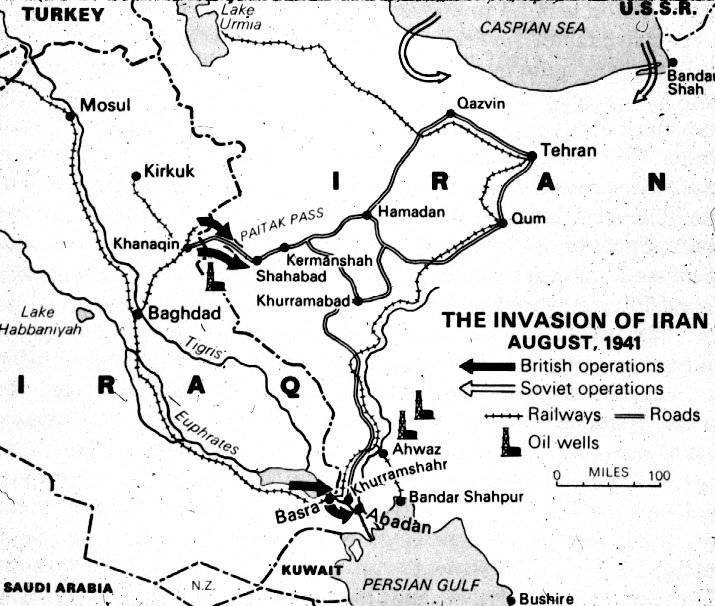
Course of operation
On the morning of August 25, 1941, the gunboat of the British Naval Forces, the Shoreham, attacked the port of Abadan. The Iranian coast guard ship "Peleng" ("Tiger") was almost immediately drowned, and the rest of the small patrol vessels retreated with damage deep into the harbor or surrendered.
Two British battalions from the 8 Indian Infantry Division under the cover of aviation forced the Shatt al-Arab (a river in Iraq and Iran, formed during the confluence of the Tigris and Euphrates). Not encountering resistance, they occupied the refinery and key communications nodes. In the Iranian port of Bander Shapur, the transport of the British naval ship Kanimbla landed troops to control the oil terminal and the infrastructure of the port city. At the same time begins the movement of British Indian parts in Balochistan.
British forces launched an offensive north-west of Basra. By the end of August 25, they had taken Hasri Sheikh and Hurramshahr. At this time, the Iranian troops rolled back to the north and east, almost no resistance. The British and Soviet Air Forces completely dominated the air, the Shah Aviation - the 4 Aviation Regiment, were destroyed in the first days of the operation. The Soviet Air Forces were mainly engaged in intelligence and propaganda (leaflets were scattered).
The British also attacked from the Kirkuk area in the north. The British battalions 8, led by Major General William Slim, quickly walked along the Khanagin-Kermanshah road, by the end of the day on August 27 the British had broken the enemy’s resistance at the Paytak Pass and occupied the Nafti-Shah oil fields. The remnants of the Iranian troops defending this line fled to Kermanshah.
British units in Iran
On the Soviet border, the 47 Army, under the command of General V. Novikov, dealt the main blow. Soviet troops were advancing in the direction of Julfa — Khoi, Julfa — Tabriz, bypassing the Daridiz gorge and Astara — Ardabil, intending to take control of the Tabriz branch of the Trans-Iranian railway, as well as the area between Nakhichevan and Khoy. It was a well-trained army, the personnel were adapted to local conditions and engaged in combat training in similar terrain. The army was supported by the Caspian flotilla, since part of the troops moved along the sea.
After 5 hours, units of the 76 Mountain Division entered Tabriz. They were followed by units of the 6 Panzer Division, advancing on the front in 10 km across the Araks River, in the Karachug-Kyzyl-Vank region. The soldiers of the 6 pontoon bridge battalion helped force the river to tank units. The division’s tanks, having crossed the border, moved in two directions - towards the border with Turkey and towards Tabriz. The cavalry forces forced the river along pre-explored fords. In addition, they dropped airborne troops to the rear to capture bridges, passes and other important objects. At the same time, the units of the 44 Army of A. Khadeev were marching in the direction of Herov — Kabah — Ahmed-Abad – Dort-Evalar – Tarkh – Mian. The main obstacles in their path was the Aja-Mirsky Pass on the Talysh Range.
By the end of 27 August, 1941, the formation of the Transcaucasian Front, fully completed all the tasks. Soviet troops took to the line Khoi - Tabriz - Ardabil. The Iranians did not offer much resistance and began to surrender to the polls.
On August 27, the Major General S. G. Trofimenko's 53 Army joined the operation. She started the movement from the Central Asian direction. 53-I army attacked in three groups. The 58 th infantry corps of General MF Grigorovich advanced in the western direction, parts of the 8 th mountain rifle division of Colonel A. A. Luchinsky moved in the center, and the 4 th cavalry corps of General T. Shapkin was in charge of the east. The two Iranian divisions opposing the 53 Army retreated almost without a fight, taking up a defensive line in the highland areas northeast of the Iranian capital. Soviet gunboats entered the ports of Pahlavi, Noushehr, Bendershakh. All were transported and landed over 2,5 thousand paratroopers.
28 August 1941, units of the British 10 Indian division occupied Ahwaz. From this point on, the problems of the British can be considered solved. In the northern direction, Major General Slim was going to 29 in August to take Kermanshah by assault, but the garrison commander surrendered it without resistance. The remaining Iranian troops were tied to the capital, which they planned to defend to the end. At this time, British troops in two columns from Ahwaz and Kermanshah marched on Tehran, and the advanced units of the Red Army reached the Mekhabad-Qazvin and Sari-Damgan-Sabzevar lines and took Mashhad. After this, there was no point in resisting. According to the previously reached agreement, the zone with a radius of 100 km around Tehran was not occupied by the Allied forces.
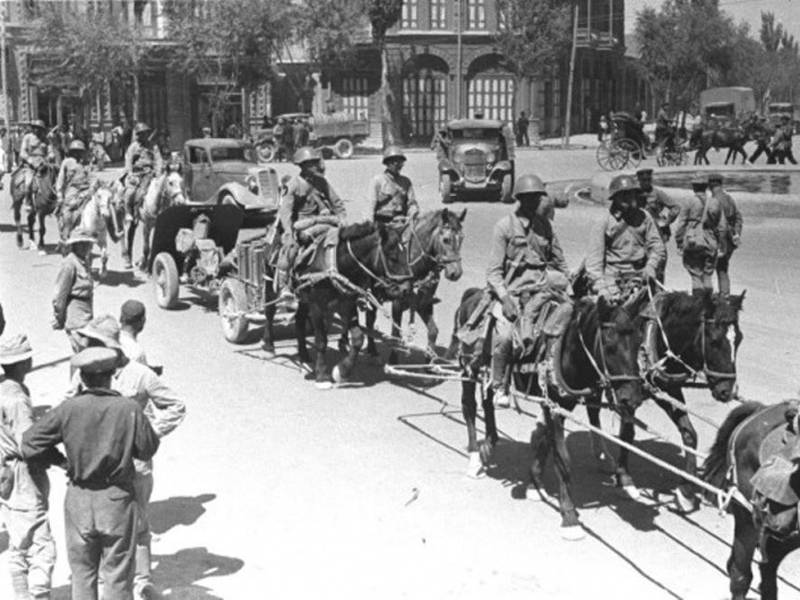
Red Army in Iran
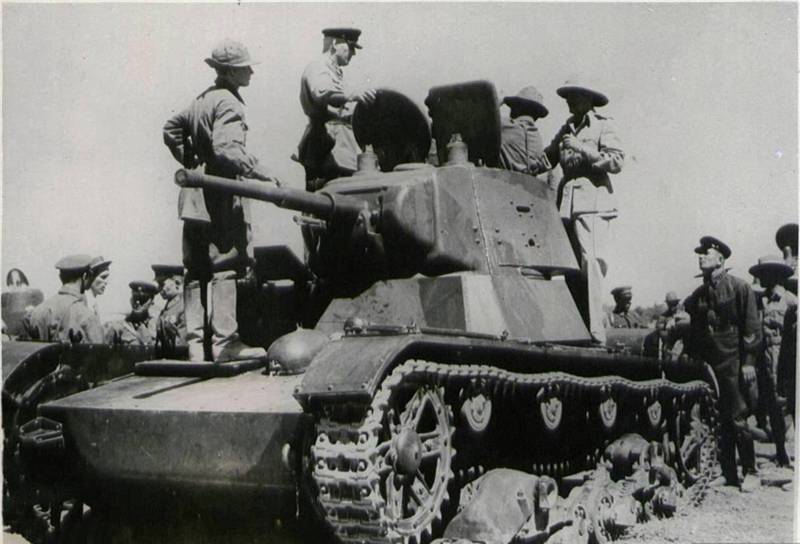
British allies inspect the Soviet tank T-26
Results
The military operation mainly consisted in the rapid occupation of strategic points and important objects. Soviet troops advancing from Transcaucasia reached the Mekhabad-Qazvin line, and the 53-I army of the SAVO reached the Sari-Damgan-Sabzevar line and advanced beyond Mashhad. British troops took control of Khuzestan, occupied Kermanshah, Hamadan and the ports of the Persian Gulf, they also took positions from Sanandaj. The Iranian army practically did not resist. This confirms the level of casualties: about 70 killed and wounded British, about 40 dead Soviet fighters (besides, hundreds of people got sick), about 1 thousand killed Iranians.
Under pressure from the British envoys, as well as the Iranian opposition, already Shah Reza Pahlavi of 29 August announces the resignation of the government of Ali Mansur. A new Iranian government was created, headed by Ali Foragi. The new head of government immediately ordered the cessation of resistance, and the next day this order was approved by the Iranian Majlis (parliament). On the same day, a truce was concluded with Britain, and August 30 with the Soviet Union.
September 8 was signed an agreement that defines the zone of occupation between the two great powers: the British southern, and the Soviet in the north. The government of Tehran has largely lost its political and economic control over the country. Tehran pledged to expel all the citizens of Germany and other allies of Berlin from the country, to adhere to strict neutrality and not to interfere with the military transit of the countries of the Anti-Hitler Coalition.
12 September 1941, the British Ambassador to Union Cripps, initiates a discussion between London and Moscow on the candidacy of the new head of Iran. The choice fell on the son of Shah Reza Pahlavi - Mohammed Reza Pahlavi. This figure suited everyone. On September 15, the Allies sent troops to Tehran, and on September 16, Shah Reza was forced to sign a renunciation in favor of his son.
Thus, Moscow solved the security problem in the Iranian sector and strengthened the strategic position on the part of Turkey, which did not dare to enter the war with the USSR on Hitler’s side. And Iran until the end of the war was a strategic corridor through which the USSR received the help of the allies in the anti-Hitler coalition.
19 September 1941 Churchill, in a letter to Stalin, confirmed his intention to provide full support in organizing the southern route of arms and cargo supplies to the Soviet Union: “I attach great importance to the question of opening a pass-through route from the Persian Gulf to the Caspian Sea not only by rail, but also on the highway, to the construction of which we hope to attract Americans with their energy and organizational capabilities. " 29 January 1942 signed the Anglo-Soviet-Iranian Treaty, under which the USSR and the United Kingdom pledged to respect the territorial integrity of Iran, to protect it from aggression from Germany, to maintain in the territory of Iran land, sea and air forces and bring them to six months term after the end of hostilities.
In general, the southern corridor played a huge role during the war years: 23,8% of all military cargoes sent to the USSR within the framework of the lend-lease program were shipped through it. Almost two-thirds of the total number of all cars delivered during the Second World War, passed this way. Only one car assembly plant in the town of Andimeshk for almost three years, was collected and sent to the USSR about 78 thousand cars.
A particularly difficult and responsible task was the delivery of aircraft to the Soviet Union. The planes were either assembled at the factories built by the allies in Iran and Iraq, and they were distilled by air to Soviet airfields, or sent by car in a disassembled form, and then assembled at Soviet aircraft factories. In order to accelerate the transfer of aircraft, a special aviation base in Margil and an intermediate one in Tehran was created in a short time. In the Azerbaijan SSR, airfields were also prepared for the reception of combat and transport aircraft, their maintenance, the training of pilots for combat use of American and British fighters and bombers. In just one year, from July 1 1943 to June 30 1944, it was possible to assemble and send about 2900 aircraft to the USSR.
As the situation on the Soviet-German front changed, especially on the difficult days of 1941-1942, a part of the Soviet units were transferred from Iran to the threatened sectors of the front. The remaining units in Iran were actively involved in the transportation of military goods delivered to the USSR through Iranian territory. At the end of 1942, the Americans joined the British and Russians in Iran. The Iranian government has embarked on promoting the American presence in the country in order to counterbalance excessive dependence on the Soviet Union and Britain. Until the fall of 1942, only the British ensured the vital activity of all transport communications in Iran. However, with the increase in traffic, the poor state of Iranian communications was becoming ever stronger. The British could not do anything about it. Dissatisfied with this, the Americans in October 1942 took control of the work of ports, airfields, railways and highways into their own hands. In March, 1943 took over control of the Trans-Iranian Railway and ports in the Persian Gulf. By 1944, the composition of US troops in Iran increased to 30 thousand. The Western Allies have done a great job of improving the transport infrastructure of Iran. After the Allies opened the second front in France, deliveries to the Soviet Union by the southern route gradually subsided.
The USSR was thinking about developing its success in the Iranian direction: in the Soviet zone of occupation two state formations were created - the Mekhabad Republic (Kurdish) and South Azerbaijan. Soviet troops stood in Iran until May 1946 of the year to counteract a possible strike from Turkey, as well as to have a "trump card" in negotiations with Western countries. However, under pressure from the West, Moscow withdrew its troops.
Soon after the withdrawal of the Soviet troops, the Iranian government virtually "torpedoed" all the agreements reached earlier with Moscow. 21 November 1946, Prime Minister Kawama, on the pretext of an election campaign, announced the introduction of government troops in all provinces, including Iranian Azerbaijan. The USSR limited itself to a “friendly warning” and a recommendation to abandon such plans. After the entry of troops into Iranian Azerbaijan 11 December 1946, the national democratic movement in this province, as in Iranian Kurdistan, was severely suppressed. A new composition of the Majlis elected by the middle of 1947 refused to ratify the Soviet-Iranian agreement on a joint oil society. As a result, Iran became an Anglo-American puppet before 1979.
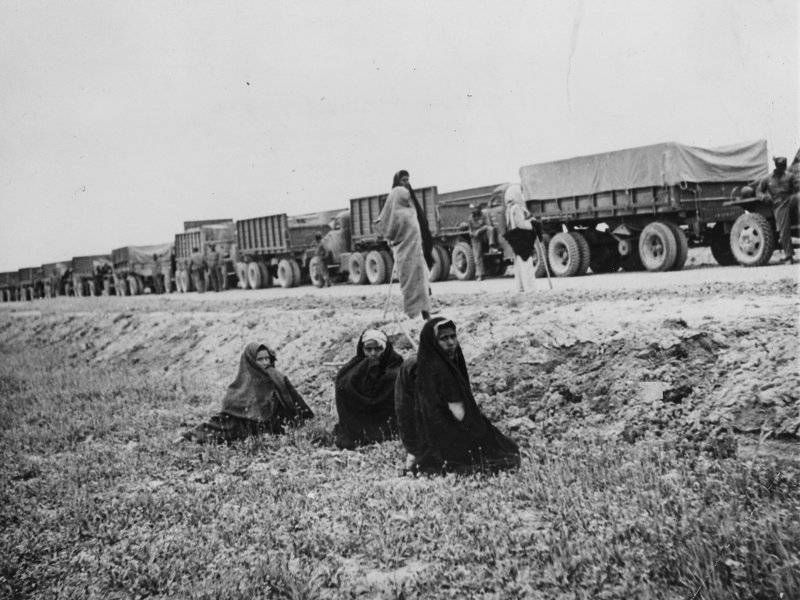
US Studebakers "US-6 on the road to the USSR through Iran
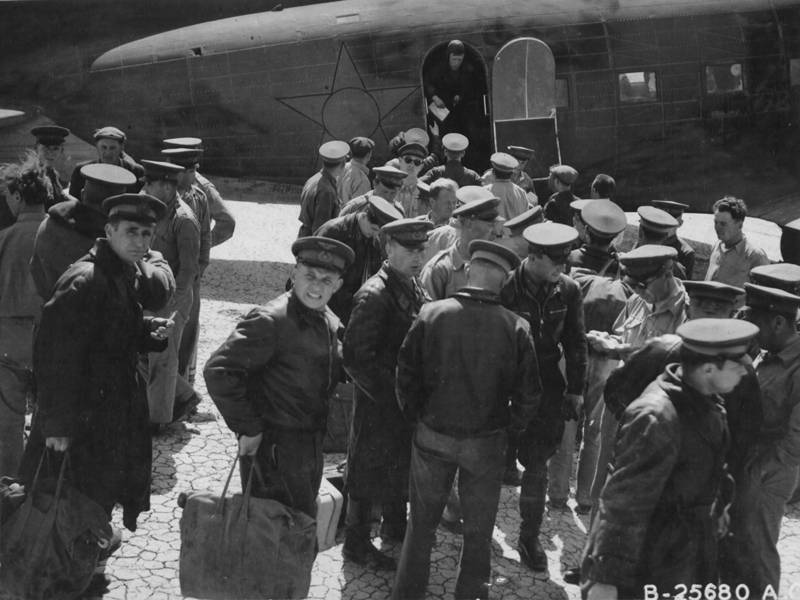
Soviet pilots arrived in Abadan to receive American aircraft
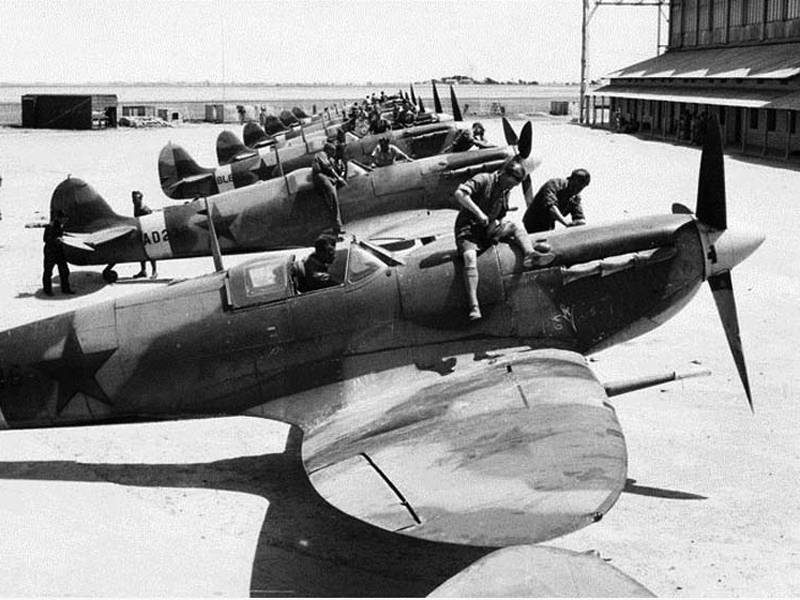
Training British fighter "Spitfire" for transfer to the Soviet side
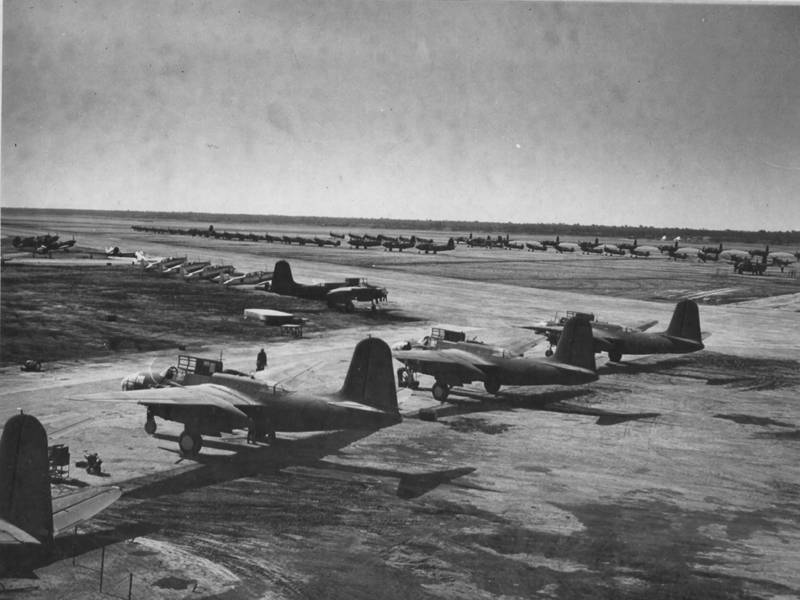
American aircraft for the Soviet Army on the field in Abadan
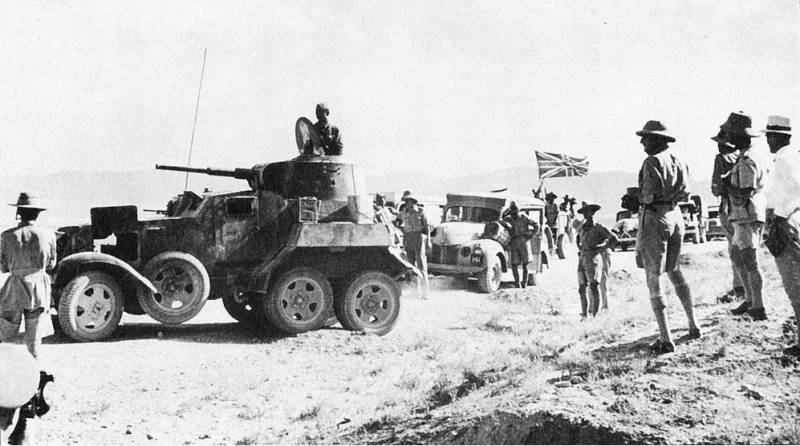
Information